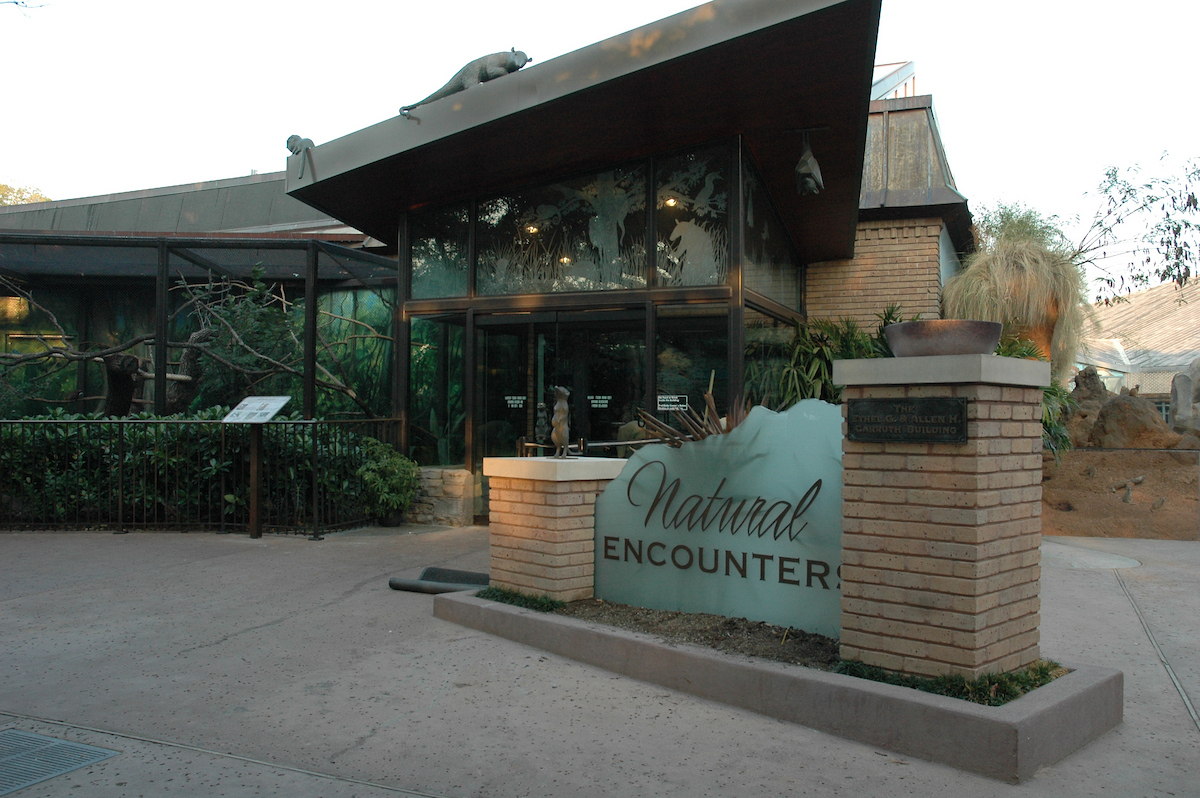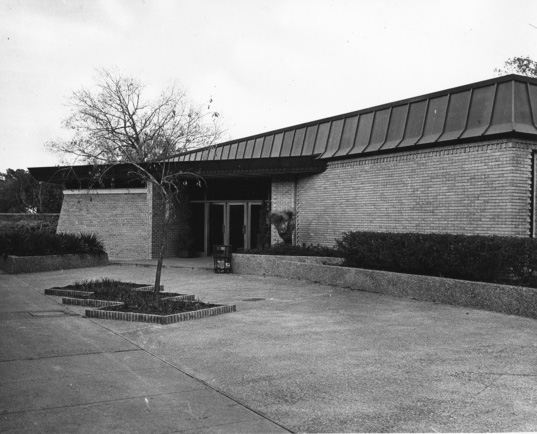
Houston Zoo to Close Carruth Natural Encounters Building After More Than 60 Years
The Houston Zoo has announced that the Carruth Natural Encounters Building will permanently close after Sunday, March 23, 2025, following the conclusion of Spring Break. Officials cited the building’s aging infrastructure as a primary reason for the closure, explaining that it no longer meets the needs of the animals housed there or the expectations of visitors.
Originally opened in 1962 as the Small Mammal House, the facility underwent a significant transformation in 2004, becoming the Carruth Natural Encounters Building. Over the years, it has provided guests with up-close encounters with a diverse range of wildlife, fostering connections between the community and the natural world.
 An archive photo of the main entrance to to the Carruth Natural Encounters Building,
An archive photo of the main entrance to to the Carruth Natural Encounters Building, Animal Relocations and Exhibit Changes
With the building’s closure, the animals currently residing in Natural Encounters will be relocated either to other areas within the Houston Zoo or to appropriate institutions where they can continue to receive specialized care.
Notably, Cheetah, a female Linnaeus’s two-toed sloth, will be moved to the South America’s Pantanal exhibit, a state-of-the-art habitat designed to reflect the ecosystem of the Brazilian wetlands. Meanwhile, the outdoor meerkat exhibit, which is connected to Natural Encounters, will remain occupied and accessible to guests.
Mobile Sidebar Ad
"While this decision wasn’t easy, it reflects our commitment to providing the best care for our animals and creating exceptional experiences for our visitors," Houston Zoo officials stated. "We’re also looking ahead to exciting opportunities to reimagine how we engage our community in the future."
A Zoo Evolving for the Future
The closure of Natural Encounters comes as part of the Houston Zoo’s ongoing evolution and commitment to conservation. In recent years, the Zoo has completed several major renovations and expansions, including:
- The Galápagos Islands exhibit (2023) – The first of its kind in a U.S. zoo, bringing visitors closer to giant tortoises, sea lions, and other species unique to the Galápagos.
- South America’s Pantanal (2020) – A vibrant, immersive exhibit replicating the world’s largest tropical wetland, home to jaguars, giant otters, and macaws.
- Texas Wetlands (2019) – A habitat highlighting native wildlife such as alligators, whooping cranes, and bald eagles.
As the Zoo continues to modernize and expand its exhibits, the decision to retire the Carruth Natural Encounters Building aligns with its vision of prioritizing animal welfare, conservation, and guest engagement.
Mobile Sidebar Ad
Last Chance to Visit Natural Encounters
With the closure set for March 23, visitors have a limited opportunity to experience Natural Encounters one last timebefore it becomes a part of Houston Zoo history. Guests can explore the interactive exhibits, diverse wildlife, and immersive environments that have made the space a favorite among generations of Houstonians.
For those planning a visit, tickets and membership details can be found on the Houston Zoo’s official website.
Looking to the Future
While the Zoo has not yet announced specific plans for the Natural Encounters space, officials have hinted at future projects aimed at enhancing educational opportunities and wildlife conservation efforts.
The Houston Zoo remains one of the most visited cultural attractions in Texas, drawing over 2 million guests annually and ranking among the nation’s leading zoological institutions. As it continues to evolve, the Zoo remains dedicated to its mission of connecting communities with animals to inspire action to save wildlife.
 Tiffany Krenek has been on the My Neighborhood News team since August 2021. She is passionate about curating and sharing content that enriches the lives of our readers in a personal, meaningful way. A loving mother and wife, Tiffany and her family live in the West Houston/Cypress region.
Tiffany Krenek has been on the My Neighborhood News team since August 2021. She is passionate about curating and sharing content that enriches the lives of our readers in a personal, meaningful way. A loving mother and wife, Tiffany and her family live in the West Houston/Cypress region.






